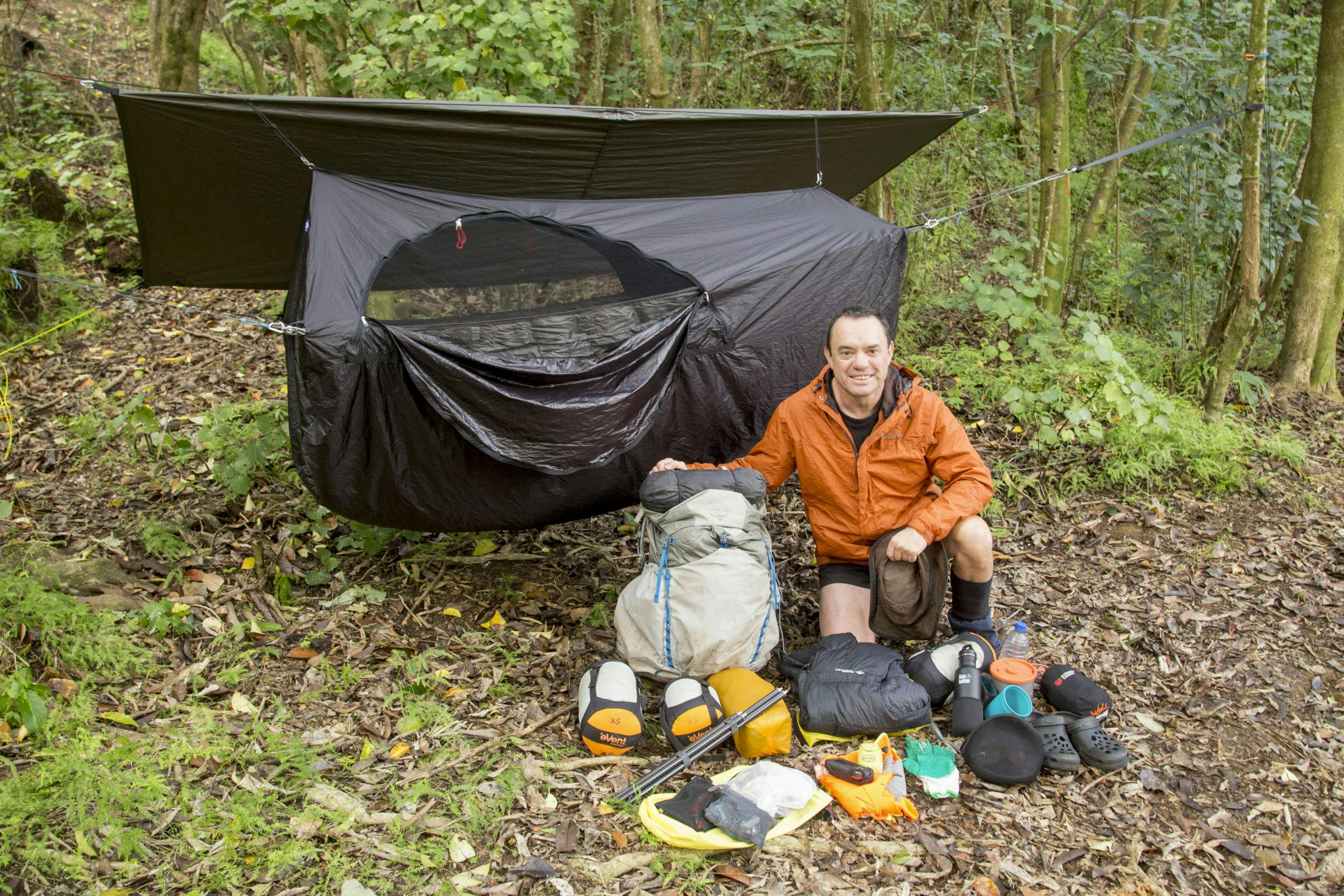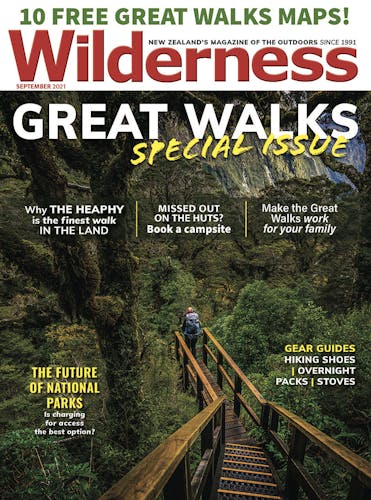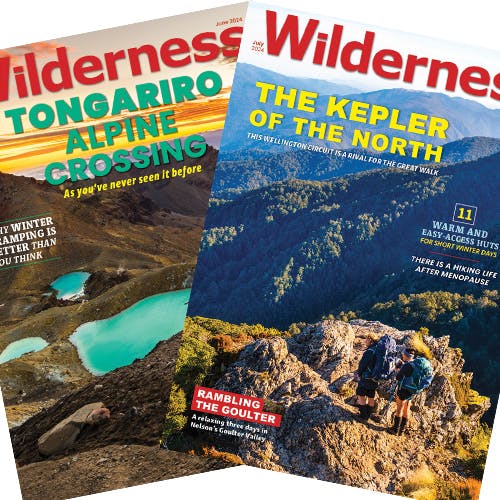When Greg Laslett goes tramping, he likes to study and rediscover the logging era tracks and campsites in Coromandel Forest Park.
“Over time, the content of my pack has settled down to a core set of kit which I can add to depending on the trip and duration,” Laslett says. “What has revolutionised overnight tramping for me has been switching from using a tent to a bridge hammock. Almost every night in the bush is now comfortable.”
A bridge hammock is hung between two trees and has bars at the head and foot to stretch the ends wide.
Laslett has fine-tuned his kit to a base weight of around 10kg, which goes up to 12kg with added water, food and trip-specific extras.
“I could get it down to 8kg or less, but this is significantly more expensive to achieve,” he says. “I always take safety gear and spare clothing.”
Hammock
I settled on a Warbonnet Ridgerunner bridge hammock (450g) with a customised Warbonnet Spindrift sock (360g). The sock shields me from wind and keeps insects out. I keep the rain out with a cuben fibre tarp (180g) or in heavier weather an Aquaquest nylon tarp (640g). At mealtimes, the tarp folds to a half cover and the hammock becomes a lounge chair. The often wet tarp lives on top of my pack, with the rest going into Sea to Summit dry bags.
Pack
When the 60l Osprey Levity came out, I was one of the first customers. This light construction pack weighs 850g and after two years of regular tramping, it’s still holding together.
Underquilt
A good underquilt is vital to a comfortable night’s sleep in a hammock. I use a Warbonnet Lynx (650g), which has an extreme temperature rating of -16°.
Cooking
Macpac’s heat exchange pot and Micro stove are quite adequate for North Island tramps. Combined with a plastic plate, Sea to Summit spoon, and a generous plastic mug, dinner is sorted. To save weight, I collect water from creeks. Boiled water goes into an 800ml Kleen Canteen steel bottle which sits in the creek for a bit to cool down or travels hot inside a stubby holder.
Headlamp
I walk at night, so dim mode is needed not to blind anybody.
I use Black Diamond’s Storm 400 which has a green light for not attracting insects and red light for observing night animals.
Clothing
I pack a Mountain Designs Resurge 700 puffer jacket for when it gets cold. I use a Mountain Warehouse Torrent jacket (400g) paired with Stoney Creek rain pants (380g) during wet weather. The pants zip up to the thigh for ‘boots on’ entry. A hi-viz shirt is good in hunting areas and can be hung to mark my camp location at night.
Navigation and safety
Doing off track tramping in the Coromandel requires good navigation skills and a safety mindset. I use a Garmin Oregon 600 GPS and always pack my ACR ResQLink PLB. I also pack a small first aid kit including extra strapping tape. Long pants and a pair of $2 gardening gloves are great for dealing with cutty grass.







